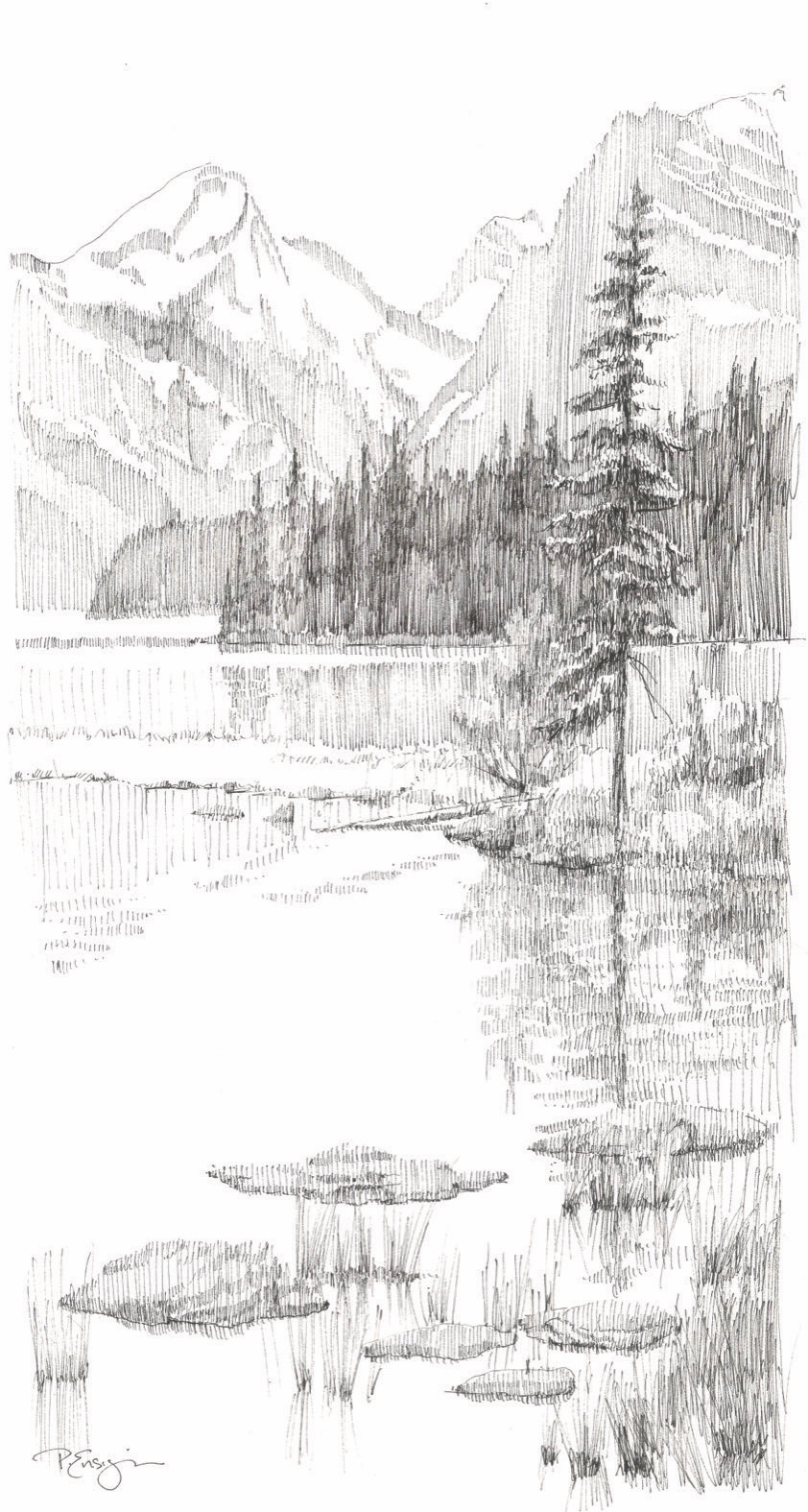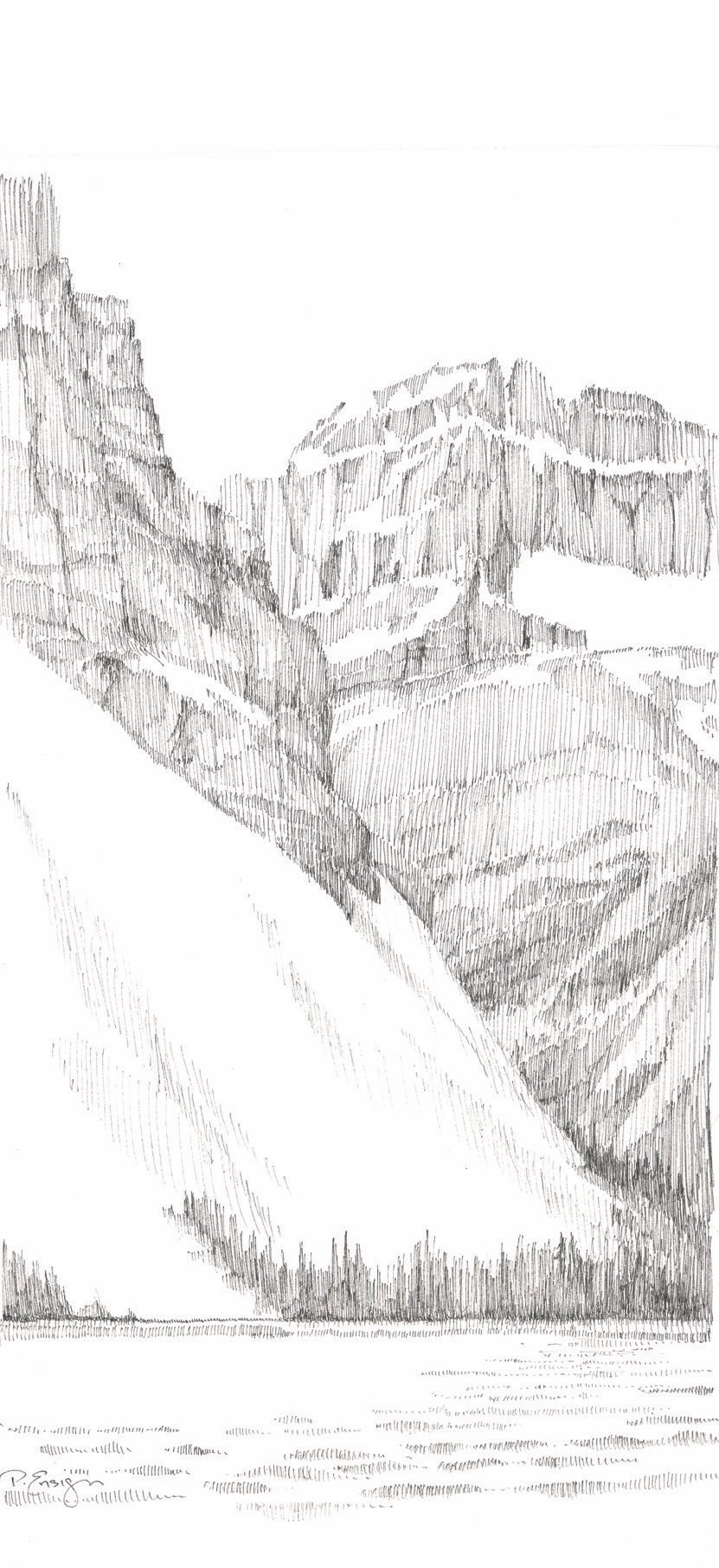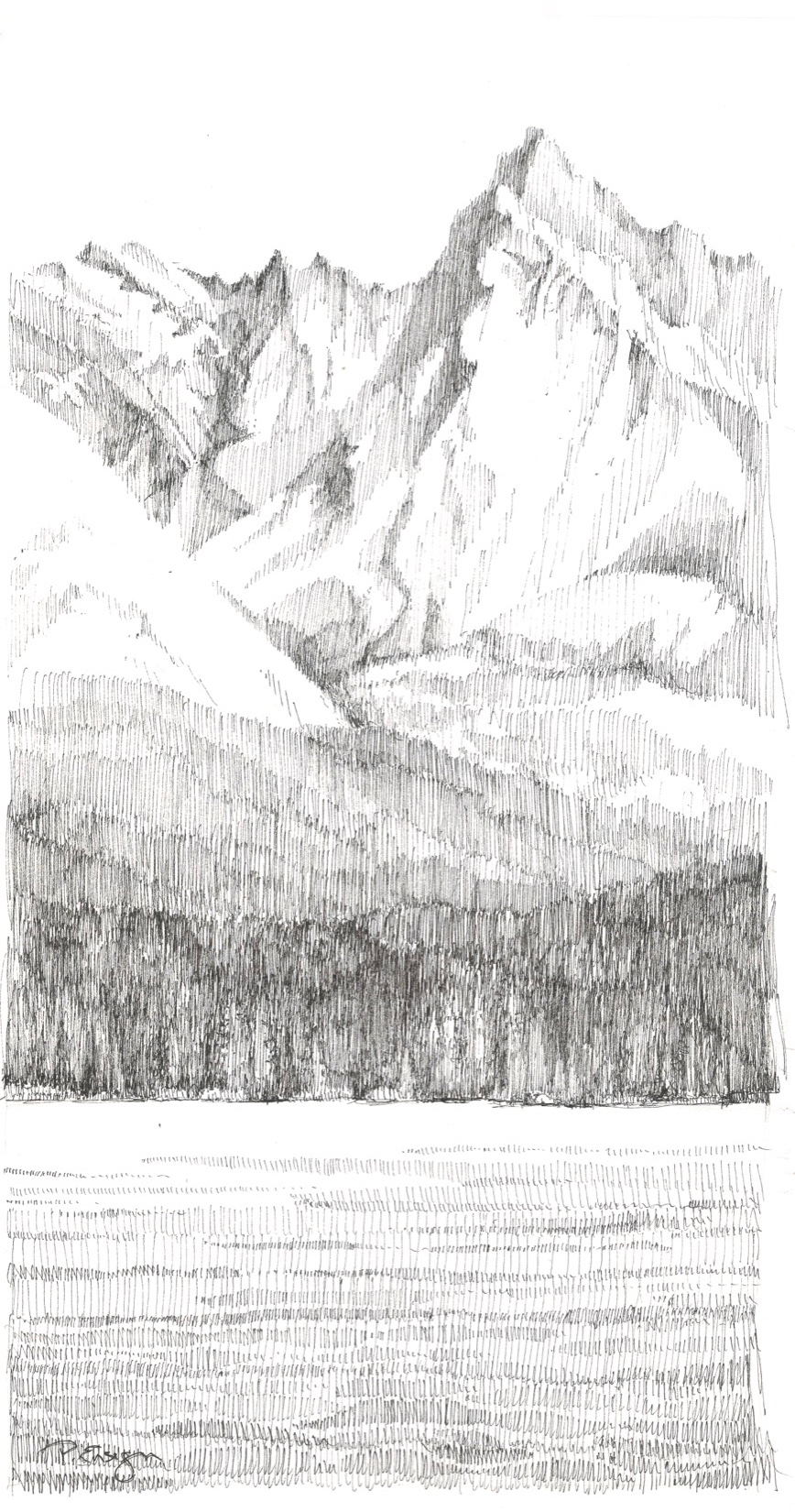A Drawn-Out Hike
In times of Instagramming every outdoor adventure in, well, an instant, slowing down to sketch a nature scene, seemingly so cumbersome by comparison, becomes a contemplative process, the details more significant for the effort.

Down a short path to the water’s edge, I find a spot beneath a lodgepole pine. I sit down on my folding stool and take in the scene before me, rugged mountain peaks descending steeply, rimming Bow Lake in the Canadian Rockies. For a few moments, I simply look. It’s a powerful and grand view. While most people might take a series of photos to document the beauty of this vista, I prefer to draw.
Drawing is quiet work. It’s my favorite way to connect with the mountains. First, I study my subject carefully. I examine each ridge and crag. I study layers of rock and sand, discover the nooks and crannies and the remnants of snow. Looking intently, I seek out proportions and relationships, consider the depths and heights, and pay close attention to the movement of light and shadow. To draw effectively is to see, really see, what’s in view. But even more than seeing, drawing on location is a total experience. Sitting on this quiet bank, away from picnickers and tourists, I hear the gentle lap of water against the shore and the birds in nearby branches. I feel the soft breeze against my face and smell the damp ground at the water’s edge along with the sweet scent of pine needles. Immersing myself in my surroundings, as I begin to draw, I let my hand and my thoughts reflect the grace of the moment.

Splendor, line by line
No special talent is needed for this task. Drawing is simply putting marks on a surface to illustrate where one’s eye goes. Anyone can experience the joy of drawing a scene before them. All that’s needed is a paper, a pencil, and a little time. Today, I start with a line drawing that identifies the big shapes, the overlap of one ridge against another. Next, I look for dark and light areas—known as values. As my drawing develops, I stay focused on my subject, constantly verifying angles and details. Lastly, I take care not to overdo the minutiae and make a point to stop before too many lines spoil the intention.
Glacier-hopping
Earlier in the day, I stopped at a pullout on the Icefields Parkway with a fabulous view of Crowfoot Glacier. The parking lot was filled with cars, campers, and buses. Tourists hopped out of their vehicles, snapped a few pictures, then jumped back into their cars to speed down the road to the next viewpoint. How will they know one glacier from the next? What memories will linger long after they have left this grand landscape?
Yes, the quiet deliberation of drawing is slow and methodical. It takes time. What could be more valuable in our hurry-up world of instant everything than to open the senses and make a lasting imprint on the soul? Take just one hour to study, absorb, and look carefully at a scene, and you will never forget it. A relationship will form, a lasting memory will be etched in consciousness. I never forget a location where I have spent time sketching.
“What could be more valuable in our hurry-up world of instant everything than to open the senses and make a lasting imprint on the soul?”

Drawing is a wonderful way to hold on to our travels and experiences. It’s never about the success or failure of the end result. It’s not about technique or individual style. It’s about the process. It’s about the time, the connection, and the quiet communion between artist and subject. △
“Drawing is a wonderful way to hold on to our travels and experiences.”
